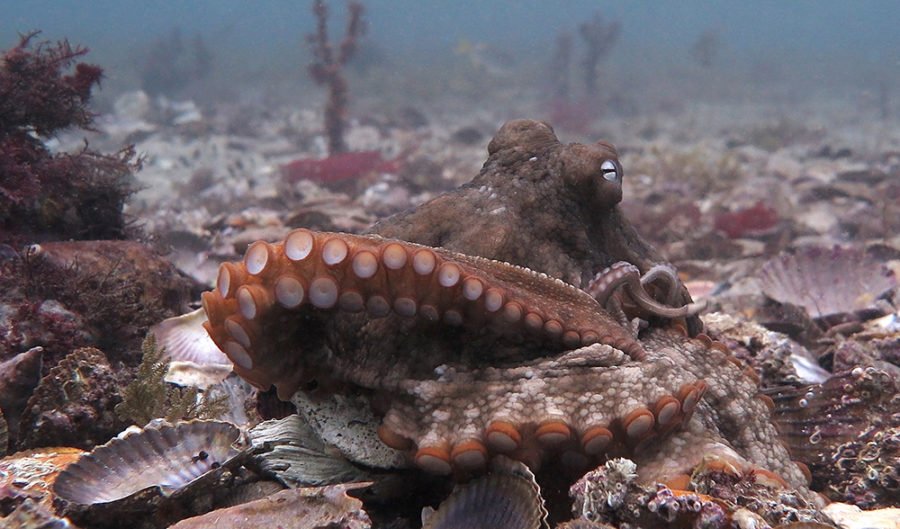The dramatic social lives of octopuses revealed

Researchers have filmed a colony of Sydney octopuses (Octopus tetricus) in Jervis Bay on the south coast of NSW living together and using their unique colour-changing abilities and flexible bodies to communicate.
This unique footage is challenging the notion that octopuses are predominantly solitary creatures.
Local diver Matthew Lawrence originally observed the octopus colony’s unique living arrangement, which he brought to the attention of David Scheel, a marine biologist with Alaska Pacific University, USA, and Peter Godfrey-Smith from the University of Sydney. Together, the team set up a number of video cameras underwater to record octopus interactions within the colony.
After gathering 53 hours of footage the researchers, along with some of their students, painstakingly sorted through the footage, documenting a total of 186 interactions.
Their findings were published in the journal Current Biology last Thursday.
Dark and moody
The videos show a diverse array of behaviours in the octopuses, from standing tall and elevating their body mantle over their head, to throwing debris at each other, and turning nearly black in coloration.
For example, the researchers were able to see that when a dark octopus approached another dark octopus they often grappled with each other, but when a dark octopus approached a pale octopus, the pale individual retreated without confrontation.
“Dark colour appears to be associated with aggression, while paler colours accompany retreat,” David said.
Despite the colony offering the researchers a unique look into the social realm of octopus society, the high concentration of octopuses found at the Jervis Bay site is not representative of most octopus habitat.
“There are scallops everywhere, providing an almost unlimited food source, while the mound of scallop shells provides an island of safety amidst a sea of predators including sharks, dolphins, seals and pack-hunting leatherjackets … the octopuses were not hanging about because they liked each other or wanted to be in close proximity,” Peter said to the ABC.
The researchers suspect that social interactions among octopuses are likely to occur wherever food is plentiful and hiding places are scarce. They plan to continue studying the Jervis Bay colony.

